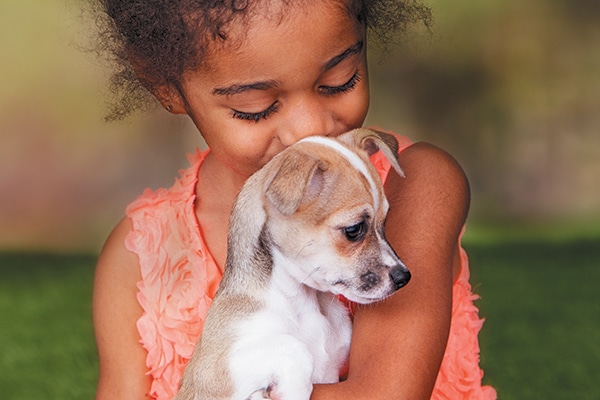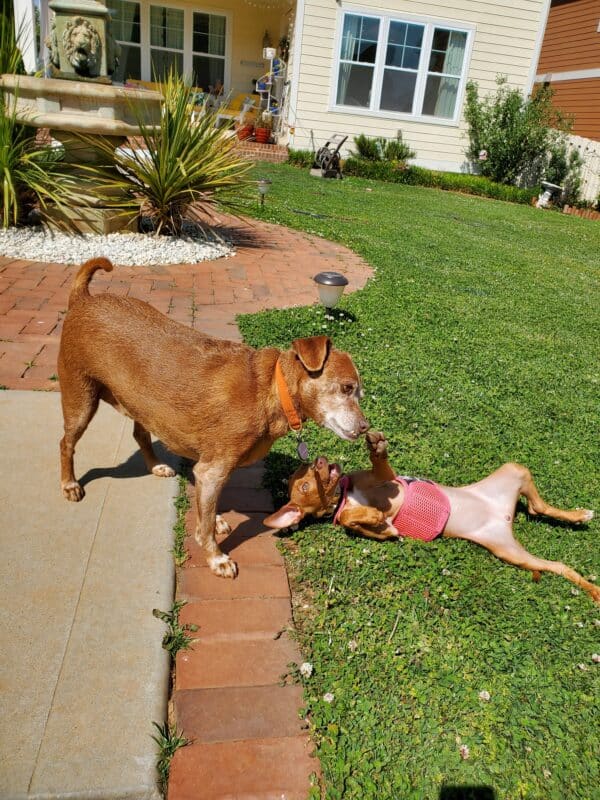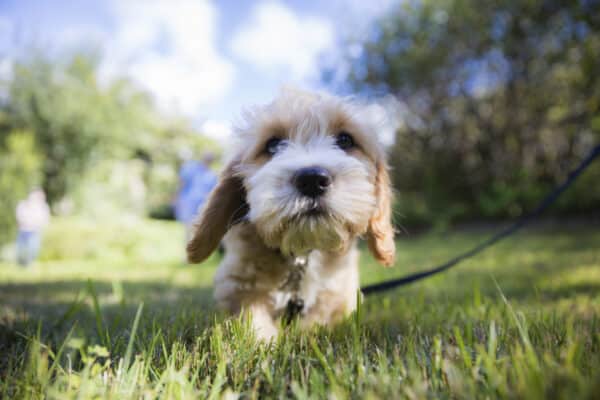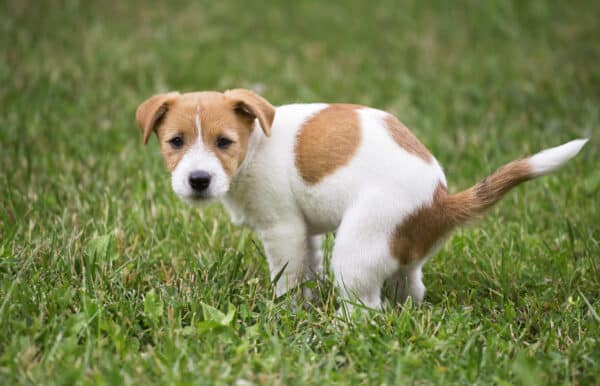I’ll never forget the day I met my Miniature Poodle, Jäger. It was truly love at first sight! Here was my little baby. Squeee! I didn’t get Jäger on a whim, though. That moment we met was the culmination of months of research and soul searching as my husband and I sought to bring home the “perfect” puppy. He’s 9 now, and he really is perfect for our family and just the most wonderful dog.
Even if you’ve gotten a puppy before, you may need a refresher on where to start, so here’s a new puppy checklist and some advice from the experts. You’ll have your dog for 10 to 15 years (or more!), so don’t rush. Take your time now to make a good choice, and it will pay off with a lifetime of love and happiness.
Who’s responsible for the puppy?
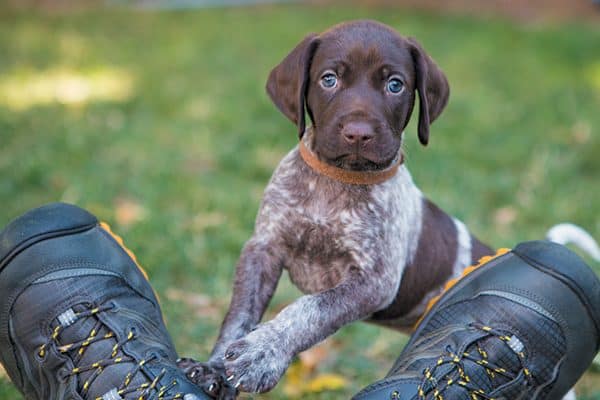
This first item on any new puppy checklist — who will care for your puppy and how? This is a good time to talk about who will be responsible for the care of the puppy and to come up with a plan to meet your pup’s needs, especially if everyone works full time.
“Do you work from home, or will someone be home to care for the puppy and let her or him out to go potty?” asks Diane Wilkerson, adoption center director for PAWS Chicago. “If not, can you stop home during your lunch break or hire a dog walker?”
You can also use doggie day care services or even ask about dogs in the workplace. It never hurts to ask!
What kind of puppy is the best fit?
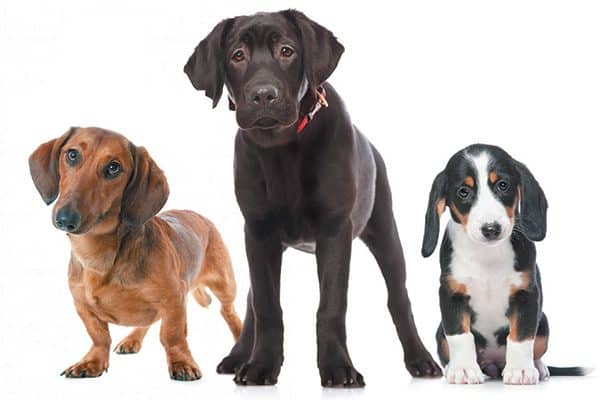
Before creating a new puppy checklist, think about what type of dog will fit best into your family. Do you live in an apartment? You probably want a smaller or less-active dog. Avid joggers need a larger, high-energy dog for a running companion.
My husband is allergic to dogs, so we knew right off the bat that we would need to bring home a hypoallergenic breed. The flip side of the coin was we had to budget for regular grooming. (I actually learned to groom Jäger myself, which saves us a lot of money!)
Don’t be fooled by anyone who says a nonshedding dog won’t need professional grooming. All dogs with hypoallergenic coats need at least some grooming, and many need a lot of grooming, which can be expensive.
“Research dog breeds (and mixed breeds) to learn some of their characteristics, personality traits and energy levels to find some that are similar to yours,” Diane says. “It’s impossible to guarantee that your puppy will always possess all the characteristics and energy levels you might be looking for, so also keep an open mind about adopting an adult or senior dog.”
How to choose
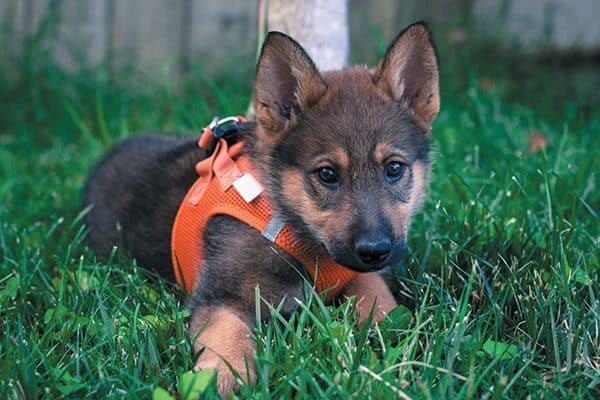
When looking at several puppies, think about your new puppy checklist. Perhaps you are looking for a small- to medium-sized, nonshedding puppy who will get along with kids and does not need too much exercise.
Go with your gut, but also ask for help from the breeder, a dog breed organization or shelter staff. “Shelter animals come in all shapes, sizes and energy levels, and will have volunteer adoption counselors available to help match you with the right puppy for your lifestyle and experience level,” Diane says.
Future adult size is fairly predictable in purebreds, but it can be a little tricky to pinpoint when looking at mixed-breed puppies. And no, the size of the paws doesn’t always indicate how big or small a puppy will grow up to be. Use common sense. If you want a small dog, don’t adopt a Lab or Pit Bull mix. When in doubt, ask for help.
As for temperament, think about what life is like in your family. “A quieter pup may not be a good candidate for a family with multiple children, but that busybody puppy may thrive and excel, and become the darling of the soccer team,” says Teresa Murphy, a Cavalier King Charles Spaniel breeder in Glen Ellen, California.
A word of advice: Don’t let looks be your main factor when choosing a puppy. “It is human nature to be attracted to what is easy on the eyes,” Teresa says. “Window dressing is just that. Character and soundness of a puppy should be the first priority.”
Create a new puppy checklist
In an ideal world, what is your perfect puppy? It helps to actually make a new puppy checklist. Note if something is non-negotiable, such as “must be friendly with kids” or “cannot weigh more than 40 pounds.” Consider these important points, and make your new puppy checklist:
Energy level:
high
in-between
Size:
small
medium
large
Grooming needs:
none
some
as much as needed
Shedding:
none
low shedding
I can deal with anything
Barking:
quiet
moderate
high alert
Kid-friendly pup:
loves kids
indifferent to kids
it doesn’t matter (we don’t have kids)
Thumbnail: Photography © adogslifephoto | Getty Images.
Jackie Brown is a freelance writer from Southern California who specializes in the pet industry. Reach her at jackiebrownwriter.wordpress.com.
Editor’s note: This article appeared in Puppies, a special issue from Dogster magazine. Look for Puppies on a newsstand near you!

